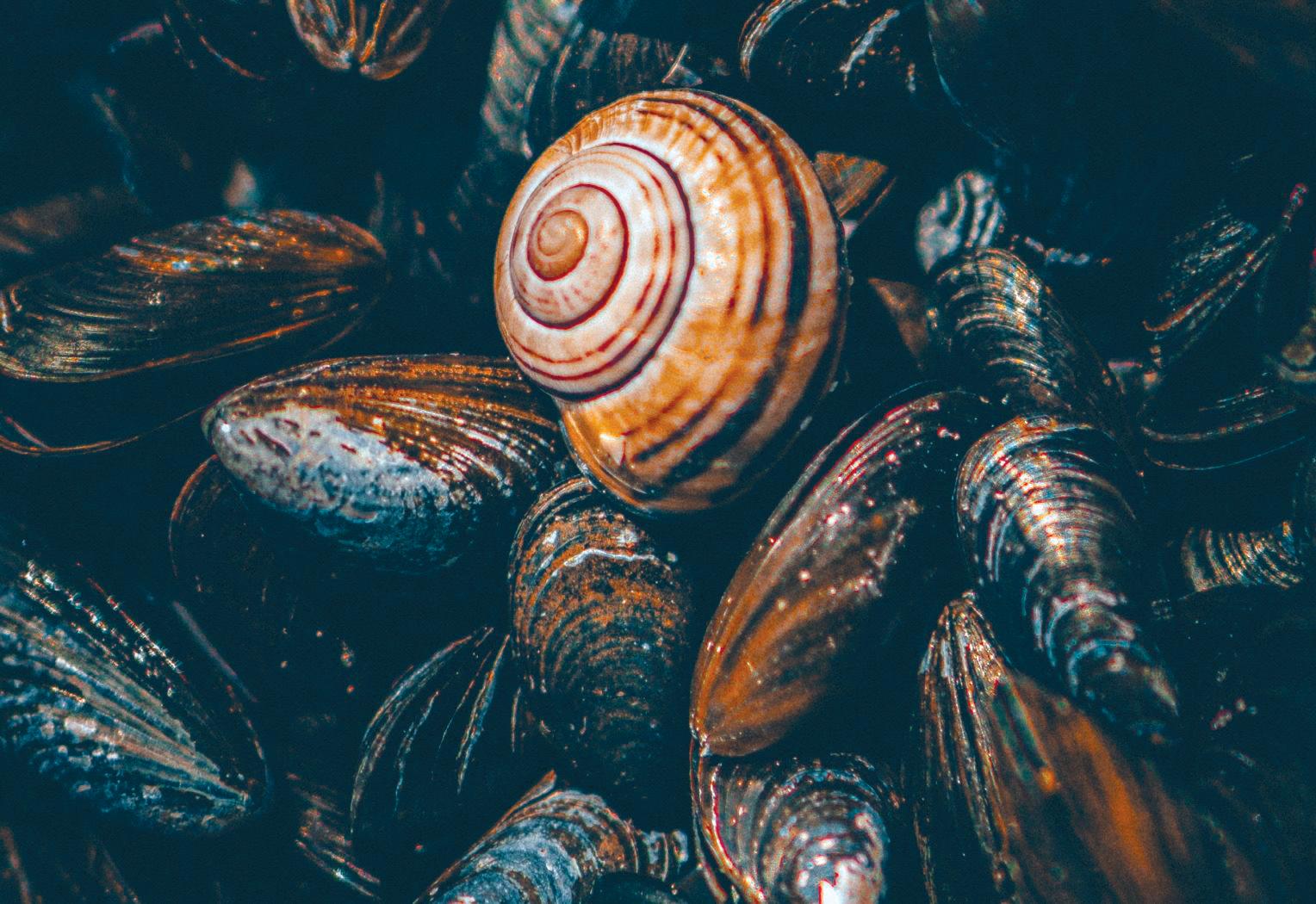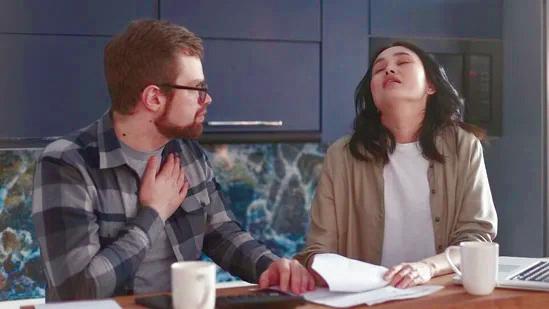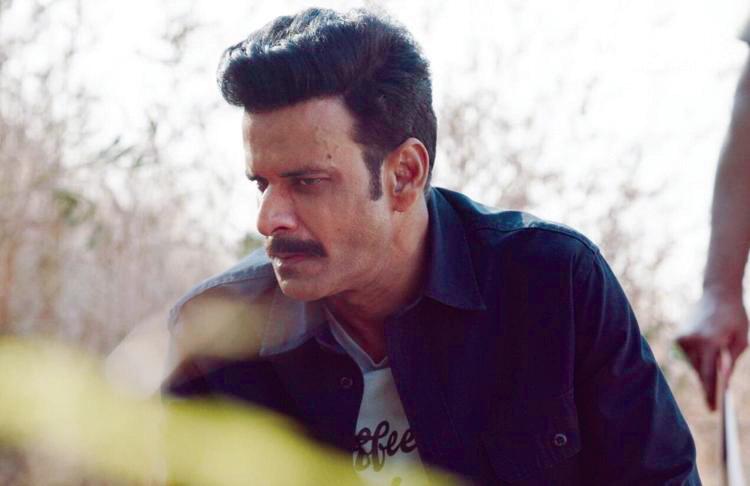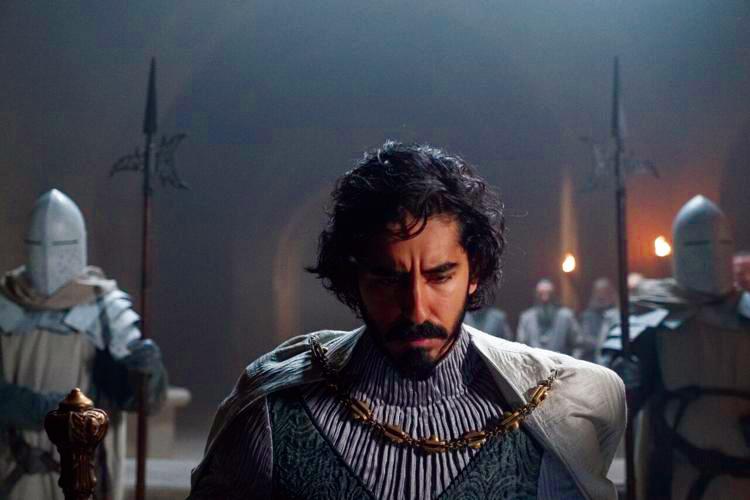
12 minute read
Helical Seashells
25 Austin South Asian | September 2021 Why Do Helical Seashells Resemble Spiralling Galaxies And The Human Heart?
One halcyon spring day in 1903, the sixty-nine-year-old anatomist and naturalist Dr James Bell Pettigrew sat at the top of a sloping street on the outskirts of St Andrews, Scotland, perched inside a petrol-powered aeroplane of his own design.
Over the course of forty years, ever since he began his aeronautical experiments in London in 1864, Pettigrew had constructed dozens of working models of various flying apparatus.
From anatomical dissection and observations of animals in the wild and at the London Zoo, Pettigrew had come to conceive of all creatures – whether on land, in water, or in the air – as propelling themselves by throwing their bodies into spiraling curves, such that their movements were akin to waves in fluid, or to waves of sound.
Instead of driving the wings vertically as in other flying machines modeled on animal flight, Pettigrew’s “ornithopter” emulated the movement that he had discovered to be universal in flying creatures: rhythmic figure-of-eight curves.
To permit this undulatory motion, Pettigrew had furnished the root of the wing with a ball-and-socket joint; to regulate the several movements of the vibratory wing – comprised of bamboo cane from which issued tapering rods of whalebone covered in a thin sheet of India rubber – he employed a cross-system of elastic bands. A two-stroke engine’s piston drove this elaborate apparatus of helical biological mimicry.
The ornithopter covered a distance of about twenty meters during its maiden flight before crashing, breaking both the contraption’s spiral whalebone wings and its pilot’s own spiral hip.
Convalescence gave Dr Pettigrew the opportunity to begin work on Design in Nature: Illustrated by Spiral and Other Arrangements in the Inorganic and Organic Kingdoms as Exemplified in Matter, Force, Life, Growth, Rhythms, &c., Especially in Crystals, Plants, and Animals. In January 1908, as he was nearing its completion, Pettigrew looped back at the work’s end to reiterate what he had stated so vociferously at the beginning – the absolute primacy of design by a “Great First Cause” and “OmniPresent Framer and Upholder of the Universe”. After a lengthy essay considering the antiquity of man – and once again stressing that the human physical form had altered not at all for at least some ten thousand years – he concluded:
Across the three volumes, 1,416 pages and nearly 2000 illustrations that made up his magnum opus Design in Nature, Dr James Bell Pettigrew barely mentioned Charles Darwin’s theory of natural selection, which he found “lame, halting, and impotent”.
Though Pettigrew deeply admired the English naturalist – who had on more than one occasion (as had T.H. Huxley, Richard Owen, John Lubbock, St George Mivart and dozens of other leading men of science) visited Pettigrew at London’s Hunterian Museum of the Royal College of Surgeons of England to view his state-of-the-art anatomical and physiological preparations – Darwin seemed to Pettigrew only tentatively confident of the very theory he had proposed to explain Nature’s “endless forms most beautiful”.
He expected that, within a generation, few would recall Darwinism as anything other than a passing fancy. What Pettigrew could not excuse were the egregious errors in Darwin’s pronouncement about the spiraling motions of Clematis, Convolvulus, Honeysuckle, Hops and many other plants.
Whatever positive contributions the retiring naturalist had made with his research on twining plants were undermined by his inexact language and thinking. Pettigrew strenuously objected to Darwin’s use of the term “reflex action” for these plants’ behavior, since this was a phrase used for action in nervous systems – of which Clematis, Convolvulus and their cousins possessed none.(Courtesy: https://science.thewire.in/)
Covid-19 Pandemic Increased Aggression Among Couples? This Is What Study Says
The study finds that the pandemic resulted in a six-to-eightfold increase in rates of intimate partner aggression.
Physical aggression increased from
two acts per year to 15 acts per year. year.
In a recent experimental study, Georgia State University researchers found that the lockdown restrictions led by the Covid-19 pandem-
ic have resulted in increased rates of physical and psychological aggression among couples. The findings of the study were published in the journal ‘Psychology of Violence’.

The study found that the pandemic resulted in a six-to-eightfold increase in rates of intimate partner aggression across the US.
Physical aggression increased from two acts per year before the pandemic to 15 acts per year once shelter-in-place restrictions began.
Psychological aggression increased from 16 acts per year to 96 acts per year.
The findings indicated that stress related to the pandemic was strongly associated with the perpetration of intimate partner aggression, even among individuals considered at low risk. shift in people’s day-to-day lives,” said the study’s lead author Dominic Parrott, professor of psychology and director of the Centre for Research on Interpersonal Violence.(Courtesy: https://www.hindustantimes.com/)
Austin South Asian Invites Contributions From Readers And Community
26 Austin South Asian | September 2021 Retired Lieutenant General Syed Ata Hasnain Applauds Authenticity Of ‘Shershaah’
MUMBAI — Ever since the pre- who commanded the Indian Ar- army ethics and behavior.
miere of “Shershaah” last week, love and appreciation has been pouring in for the team. Lt. Gen (Retd.) Syed Ata Hasnain, my’s 15 Army Corps in Kashmir, is the latest to praise “Shershaah” for its detailed research—from capturing authentic locations to depicting In a live chat with actor Sidharth Malhotra, Lt Gen. Hasnain said, “The scenes that the film has shown of the Kashmir valley are very authentic. I have lived half my life there, but I’ve never seen such authentic scenes been captured. Simple things like army officers not revealing their sources have stood out in the film.” He added, “Some of the scenes that show the human aspect of a soldier are

This World Photographic Day, Karan Johar Teams Up With National Geographic in India for Exciting Project

MUMBAI — On the occasion of World Photography Day Aug. 19, National Geographic, a brand known for its iconic imagery and some of the best pictures from across the world, has teased us with something special that they are launching.
The brand has teamed up with Karan Johar, the ace filmmaker, for a project around photography and videography. The film opens on a calm evening on a serene beach. We hear the sounds of waves gently crashing on the shore, seagulls cooing, and other ambient sounds.
It is then that the frame spans out and we see Karan Johar saying: “Some sights take you places.” The teaser then ends with Karan Johar mentioning: “Something inspiring, clicking soon. Stay tuned!”
The teaser has left audiences intrigued what this association could mean. One thing is for sure, that National Geographic is all set to take its storytelling and photography game a notch higher with the famous filmmaker on board. (Courtesy: https://www.indiawest. com/) captured well. I hope that “Shershaah” sets a benchmark for other Hindi filmmakers to make well-researched army films in the future.”
Applauding Malhotra’s performance, he told the actor, “I would like to compliment you for really getting under the skin of an army officer. I have seen many armybased films over the years, but no one has got it so right.”(Courtesy: https://www.indiawest.com/)
Manoj Bajpayee Wins Melbourne Award For ‘The Family Man 2,’ Says Proud Moment For Team
MUMBAI — Manoj Bajpayee received the Best Actor award for his role in ‘The Family Man 2’ web series at the Indian Film Festival of Melbourne 2021 on Aug. 20.
Hearing the news, he said it was a “proud moment” for the entire team and went on to explain why he chose to make his web debut with the show back in 2019.
Manoj said in a conversation with IANS: “It is a big win not for me but for the team of ‘The Family Man’, because be it film or a web series, it is teamwork that matters.
Yes, my character, Srikant Tiwari, has been loved by everyone and it is also one of the top shows in the world now. So, I am happy that the web series worked, it has got loved globally! That is fantastic.”
“In 2018, when Raj and DK approached me with the narration of my character, I saw so much potential for me to add to it as an actor. I thought, yes, I can take the character from paper to screen, and to a level higher.
Of course, none of us knew how much of that would be loved by the audience, but thankfully, it did! As I said, I am so glad that the show is loved. That is why my character is appreciated.” ‘The Family Man 2’, streaming on Amazon Prime Video, bagged two awards at the film festival -- the second going to Samantha Akkineni.
The cast of the series also includes Priyamani, Sharib Hashmi, Sunny Hinduja, Shreya Dhanwanthary, Sharad Kelkar, Seema Biswas, and the child actors Ashlesha Thakur and Vedant Sinha.
Asked about his experience of working with child actors, Bajpayee said, “I do not look at a
child actor or junior actor as any less than the other co-actors. They are also artistes. So, it is easy for me to work with children. These youngsters were very sincere and I enjoyed working with them.”
When can we expect Season 3 of The Family Man? “I think we still have time for that because only the writing of the script has begun. We have a lot to work to do before we come up with the new season of the show.
So, say, a year from now, yes, that much time we need to make Season 3. As it happens, we’ll surely share the news with our audience.” (Courtesy: https://www.indiawest. com/)

27 Austin South Asian | September 2021 Dev Patel Talks About His Character In ‘The Green Knight’
MUMBAI — British actor of In- Directed by David Lowery, “The
Green Knight” is based on the epic 14th century poem about a young man in King Arthur’s court who embarks on an unforgettable journey of self-discovery.
The Oscar nominated actor stars as Sir Gawain, who has to battle ghouls, ogres, thieves and crooks on his path to evolution.
Dev said: “Gawain is sort of this spoiled brat, and I told David before I signed on that if we’re going to go on this extraordinary journey with him, amid sparse dialogue and many instances of questionable behavior, there has to be something that makes you root for him through this adversity.”
The “Lion” star feels that the script has a shrewd and timely take on masculinity, a fact that drew him more towards the project.
“Gawain is entitled and drenched in privilege but becomes humbled over the course of the movie by the smart women around him,” he added. The script’s core idea really got him excited.
“This young man sets out across this harsh terrain, and it’s a trial by nature in so many ways.
He comes across life and all its ferocity, scavengers, a damsel in distress, a beautiful woman who tempts him, and you realise how naive he is as a young man, despite or perhaps because of his privileged origins.”
The film also features Alicia Vikander and Joel Edgerton among others. PVR Pictures is set to release “The Green Knight” in Indian theaters on Aug. 27. (Courtesy: https://www.indiawest.com/)

dian descent Dev Patel has spilled the beans about his character in the film “The Green Knight” which is slated to release on August 27.
Singer Priya Darshini To Conduct Musician Workshop As Part Of Diaspora Diplomacy Series
CHENNAI, Tamil Nadu — Grammy-nominated singer Priya Darshini is all set to host a free virtual workshop for aspiring musicians eral Chennai.
Darshini will conduct the musical workshop along with the popular band House of Waters, comprising hammered dulcimer artist Max ZT, bass guitarist Moto Fukushima, and drummer Sunny Jain.
The Indian American singer Aug. 18 performed virtually for everyone as a part of U.S. Mission India’s #DiasporaDiplomacy series.
Expressing happiness at being a part of the #DiasporaDiplomacy series, she said, “I’m deeply honored to be a part of #DiasporaDiplomacy and to be a part of the diverse Indian immigrant community here in America.
Having lived in a primarily Maharashtrian and Gujarati neighborhood in a multicultural Mumbai and raised in a modest South-Indian Tamil household, I always felt that I was on the periphery of all these cultures.

Moving to America and living in New York City amplified that in fascinating new ways.
The periphery offers unique and important perspectives that produce questions of centrality and has been the impetus for so much of my critical thought and my music.
It brings me great joy to be able to offer my music as a language to process what so many of us feel.”
The #DiasporaDiplomacy series presents prominent Indian Americans discussing their journeys and their role in deepening bonds between the United States and India.
The series also highlights the extraordinary contributions of the Indian American community to the U.S. business, academic, innovation, health, and science sectors.
To Advertise: 512-828-6709
Zilker Park Vision Plan?
(Continued From Page 18)
Attending the community meetings and sharing input throughout the process is a great way to participate.
We also encourage the Asian community to attend the pop-events. The Parks and Recreation Department plans to host 2 pop-events in each of the 10 council districts.
The Asian community can help influence the plan by sharing their stories and memories of spending time at Zilker Park and their ideas for the future of the park. To find a pop up event or other input opportunity, visit AustinTexas.gov/ ZilkerVision.
What is the purpose of the community meetings?
The community meetings and other engagement activities aim to reach all Austinites to identify your hopes and desires for this jewel of Austin.
Are these community meetings inperson or online via social media? The community meetings will be held virtually via Zoom and Facebook live. In addition, the Parks and Recreation Department will meet people where they are through a series host pop-up events around Austin. What are the future dates for the remaining community meetings?
The list of future community meeting dates can be found on AustinTexas.gov/ZilkerVision.
How is the vision plan being funded?
Funding for this planning process is a result of the 2012 General Obligation Bond that was approved by City of Austin voters in November 2012.
Which areas of Zilker Park need to be restored?
The planning process will assess all aspects of the park with a comprehensive lens including but not limited to: programming, maintenance, environmental features and ecology, historical preservation and cultural resources, transportation, circulation, and parking, as well as business operations and management.
Where can we find more information about the Zilker Park Vision Plan?
For more information, please visit AustinTexas.gov/ZilkerVision. Please spread the word with your neighbors, colleagues, family and friends.











